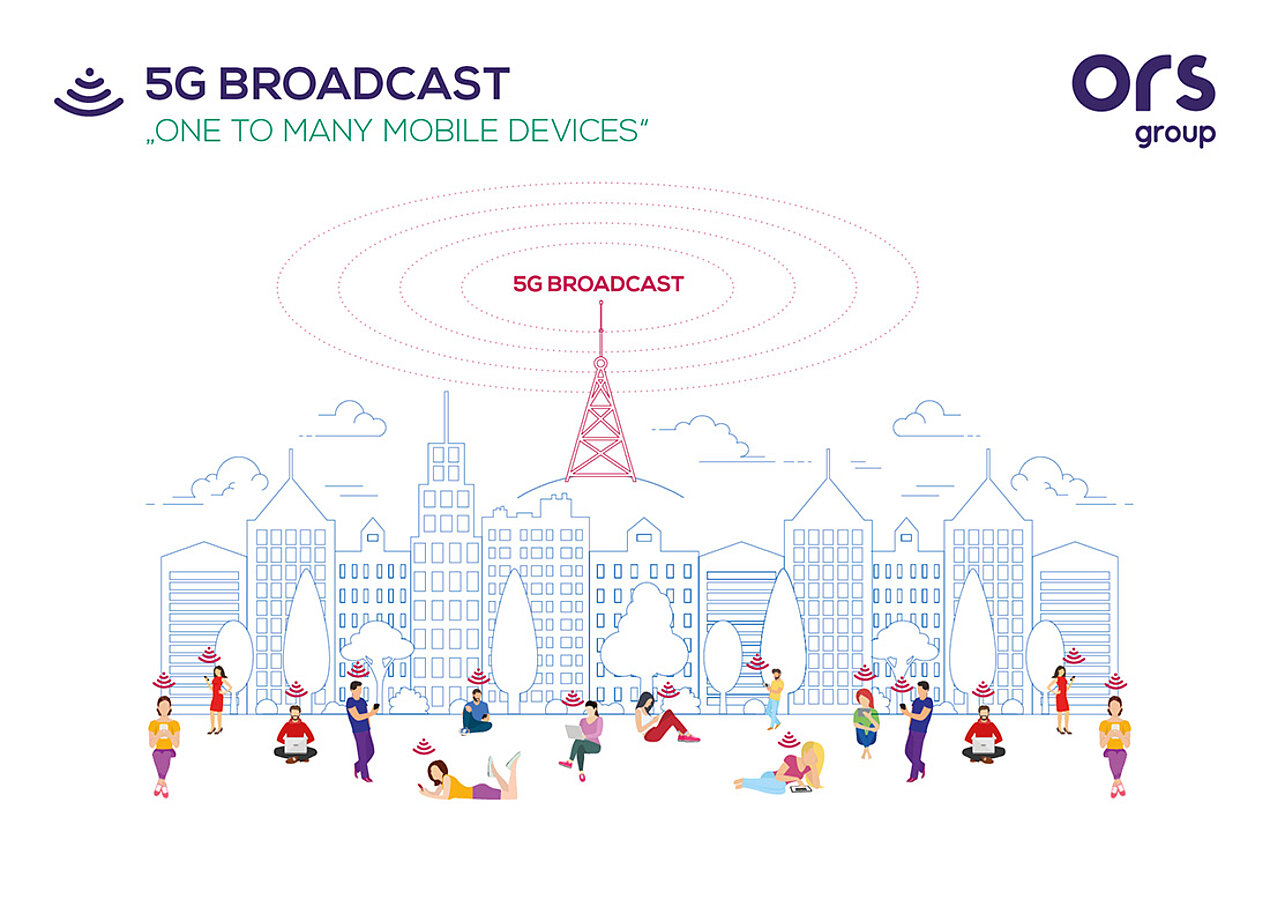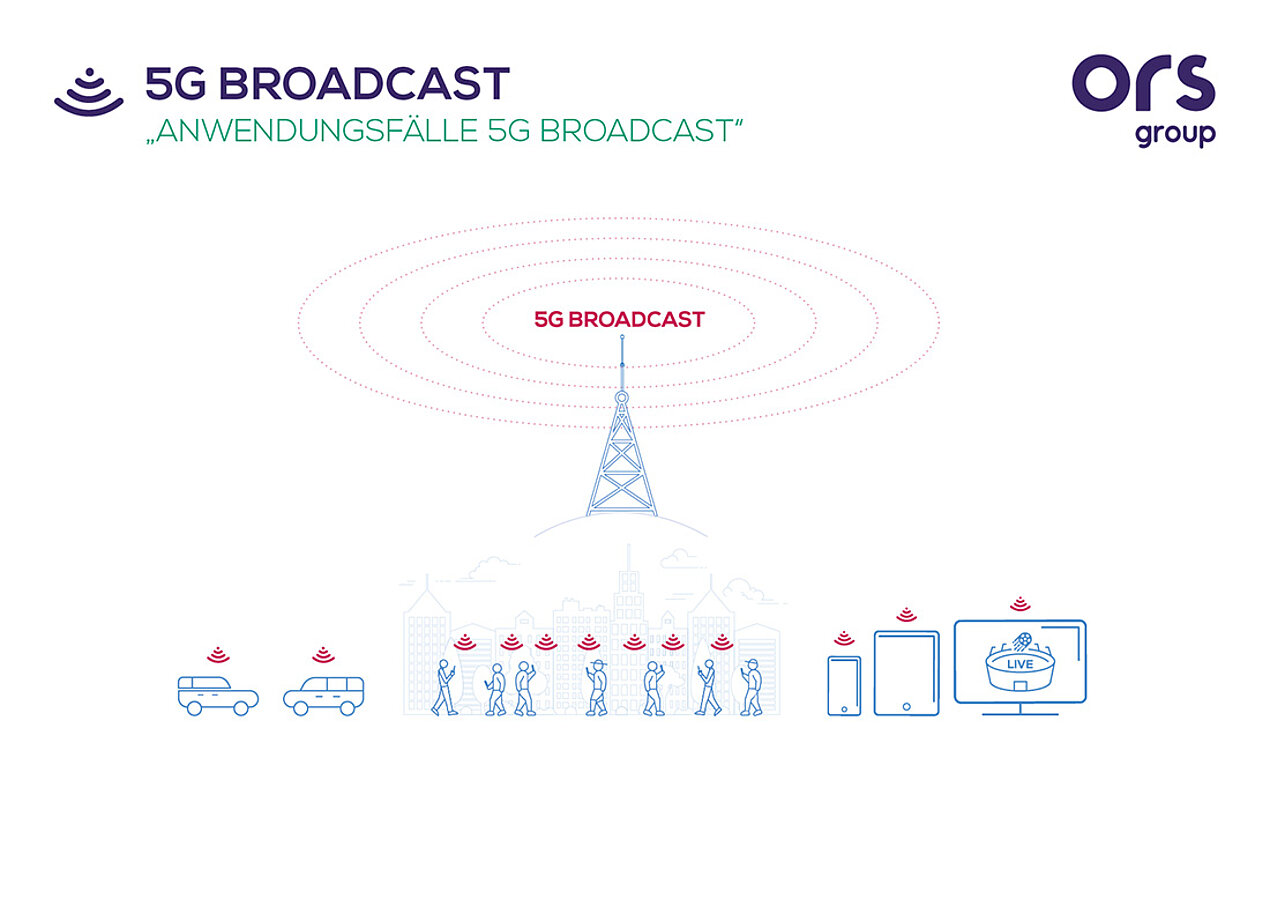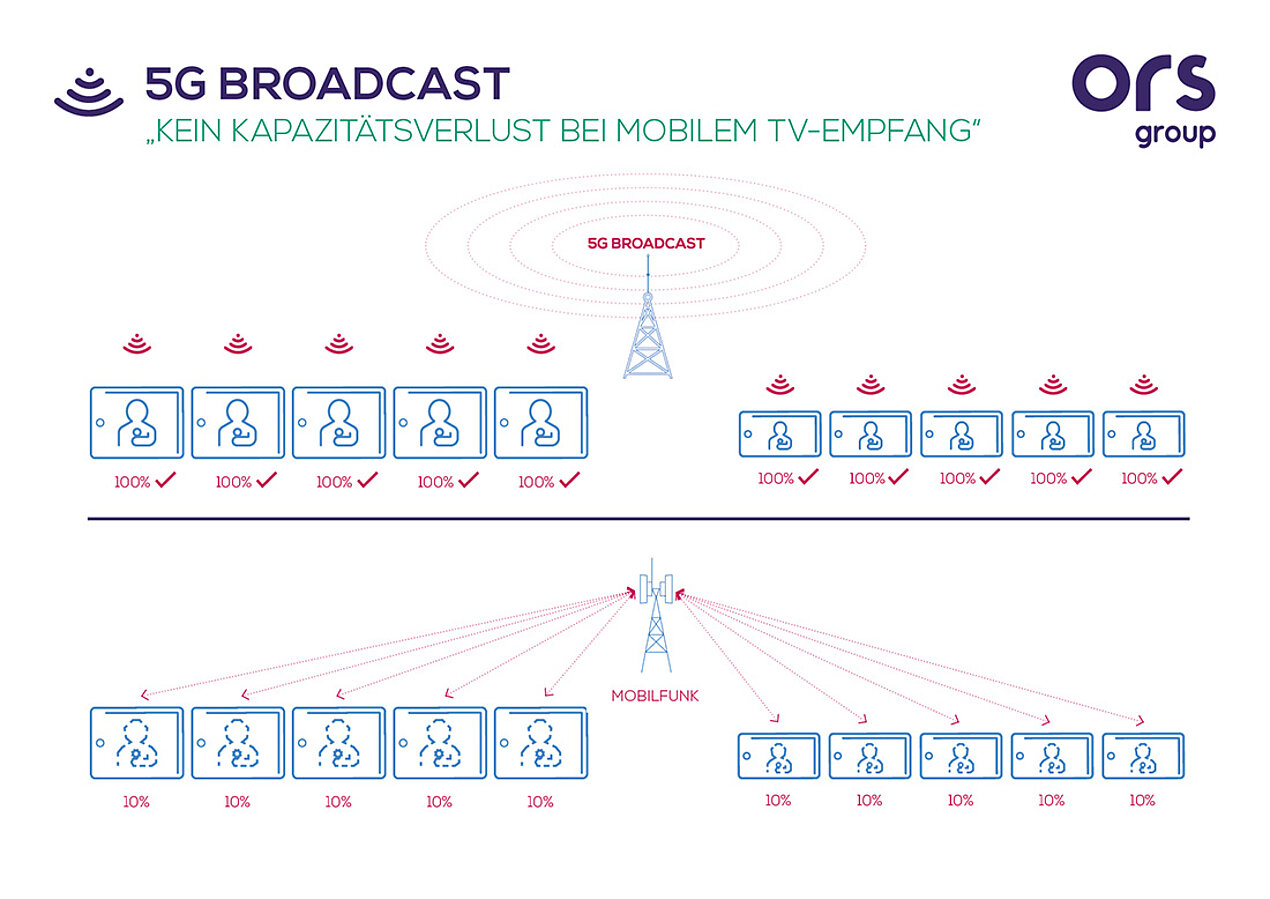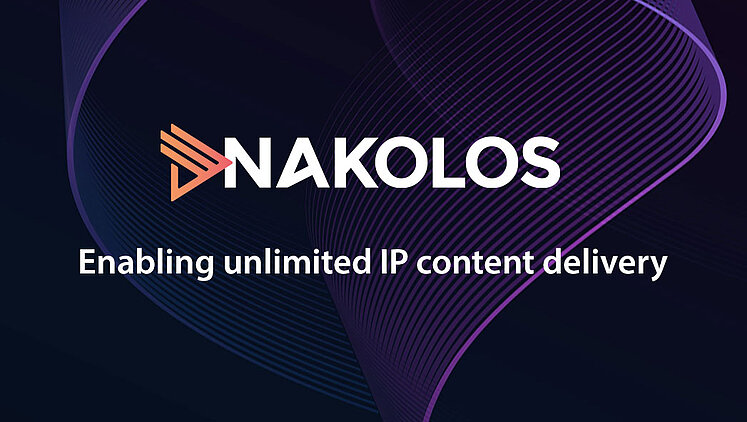
5G Broadcast offers numerous advantages and possible applications
With 5G broadcast, a single data stream is distributed via a high-tower-high-power transmitter (HTHPs) to all end devices in the coverage area. With mobile communication networks, in contrast, an individual data stream must be sent for each end device. 5G Broadcast can take the load off mobile communication networks during large live broadcasts and offer a high level of reliability.
The ORS-internal start-up Nakolos provides additional services and use cases in the context of 5G Broadcast.
Possible applications for 5G Broadcast:
5G Broadcast Standalone enables broadcasters to operate dedicated 5G broadcast channels 24 hours a day. This allows them to reach their customers via mobile devices, in addition to the usual distribution via ATSC and DVB.
When a mobile user leaves the area with broadband access and enters an area with 5G broadcast, the video stream can be seamlessly switched from broadband streaming to 5G broadcast. The best part is that the user doesn't even notice the switch - and the same is true in reverse.
By utilising the usage data sent to the backend, content providers can reduce their delivery costs. They can access free 5G Broadcast capacity from broadcast network operators as required. They also have the option of simply setting a threshold value. This determines when the use of 5G Broadcast is more cost-efficient than distribution via a content delivery network (CDN).
5G Broadcast, with its ability to support low latency (less than one second) for live events, is an elegant solution. It enables the transmission of high-resolution streams with minimal delay to a large number of viewers - ideal for events such as Formula 1 races, football matches or at concerts and festivals.
In the event of an emergency, such as flooding or power outages, 5G Broadcast offers the option of sending emergency messages directly to mobile devices, even if the mobile network fails.
Other advantages compared to the existing distribution options are:
- 5G Broadcast enables linear television on mobile devices such as smartphones and tablets.
- This means that an unlimited number of users can be reached simultaneously – there is no excessive network utilization and loss of quality as with streaming.
- Broadcasters can continue to reach their customers directly, cost-effectively and without discrimination.
- Consumption of linear TV or radio services does not consume any data volume of mobile contracts.
- 5G Broadcast enables real-time transmission of event signals to countless mobile phones at sporting events and festivals.
- 5G Broadcast has a far-reaching potential for the media industry, such as for in-car entertainment in self-driving cars.
- A stand-alone 5G Broadcast network ensures transmission of information to TV, radio and mobile devices in the event of a catastrophe or crisis.
- Broadcasters can reduce distribution costs via the internet while maintaining high streaming demand (Broadcast on Demand).
![[Translate to English:] Die Vorteile von 5G Broadcast [Translate to English:] Smartphone in Hand mit 5G Logo](/fileadmin/_processed_/e/9/csm_LP-5G-BC-Vorteile-ORS-1920x470_81570b4886.jpg)



